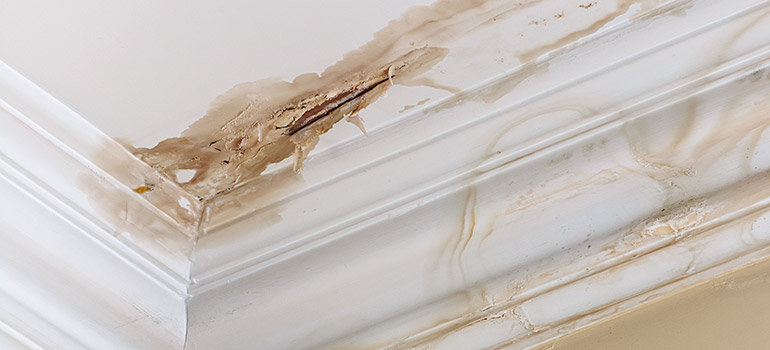6 Water Damage Remediation Do's and Don'ts.
6 Water Damage Remediation Do's and Don'ts.
Blog Article
Have you been looking for related information concerning Simple Solutions To Preventing Fire And Water Damage To Your Home?

Though water provides life, water invasion on components where it's not supposed to be can result in damage. If the water soaks into your structure, it can peel away surface areas as well as erode the foundation. Mold and mold additionally flourish in a moist setting, which can be dangerous for your health and wellness. Residences with water damage odor old and mildewy.
Water can originate from many resources such as tropical storms, floodings, ruptured pipes, leakages, as well as sewage system problems. In case you experience water damage, it would be good to understand some safety precautions. Below are a couple of standards on how to deal with water damages.
Do Prioritize Residence Insurance Coverage Coverage
Water damages from flood as a result of heavy winds is seasonal. However, you can also experience an unexpected flooding when a defective pipeline instantly bursts right into your residence. It would be best to have residence insurance that covers both acts of God such as all-natural disasters, and also emergencies like busted plumbing.
Do Not Forget to Switch Off Utilities
In the event of a disaster, especially if you live in a flood-prone area, it would be suggested to switch off the major electrical circuit. This cuts off power to your whole residence, avoiding electrical shocks when water can be found in as it is a conductor. Don't neglect to turn off the main water line shutoff. Furnishings will certainly relocate about and create damages when floodwaters are high. Having the major shutoff shut down prevents further damage.
Do Remain Proactive and Heed Climate Notifies
Pay attention to emptying warnings if you live near a river, lake, or creek . Doing so minimizes possible building damages.
Do Not Ignore the Roofing System
You can avoid rainfall damages if there are no openings and leaks in your roof. This will stop water from flowing down your wall surfaces as well as saturating your ceiling.
Do Focus On Small Leakages
A burst pipe doesn't take place over night. Generally, there are warnings that suggest you have deteriorated pipes in your house. For instance, you may discover gurgling paint, peeling wallpaper, water touches, water stains, or trickling audios behind the wall surfaces. At some point, this pipeline will certainly break. Preferably, you need to not await points to intensify. Have your plumbing repaired prior to it causes substantial damages.
Do Not Panic in Case of a Burst Pipeline
When it comes to water damages, timing is vital. Hence, if a pipe bursts in your home, instantly shut off your primary water shutoff to cut off the resource. Call a respectable water damage repair expert for help.
Water gives life, water invasion on parts where it's not meant to be can result in damage. Houses with water damages scent musty as well as old.
Water damages from flood fees to hefty winds is seasonal. You might notice bubbling paint, peeling off wallpaper, water touches, water stains, or leaking sounds behind the walls. When it comes to water damages, timing is vital.
Some Do's & Don't When Dealing with a Water Damage
DO:
Make sure the water source has been eliminated. Contact a plumber if needed. Turn off circuit breakers supplying electricity to wet areas and unplug any electronics that are on wet carpet or surfaces Remove small furniture items Remove as much excess water as possible by mopping or blotting; Use WHITE towels to blot wet carpeting Wipe water from wooden furniture after removing anything on it Remove and prop up wet upholstery cushions for even drying (check for any bleeding) Pin up curtains or furniture skirts if needed Place aluminum foil, saucers or wood blocks between furniture legs and wet carpet Turn on air conditioning for maximum drying in winter and open windows in the summer Open any drawers and cabinets affected for complete drying but do not force them open Remove any valuable art objects or paintings to a safe, dry place Open any suitcases or luggage that may have been affected to dry, preferably in sunlight Hang any fur or leather goods to dry at room temperature Punch small holes in sagging ceilings to relieve trapped water (don't forget to place pans beneath!); however, if the ceiling is sagging extremely low, stay out of the room and we'll take care of it DO NOT:
Leave wet fabrics in place; dry them as soon as possible Leave books, magazines or any other colored items on wet carpets or floor Use your household vacuum to remove water Use TV's or other electronics/appliances while standing on wet carpets or floors; especially not on wet concrete floors Turn on ceiling fixtures if the ceiling is wet Turn your heat up, unless instructed otherwise

I stumbled upon that piece on Ways to Reduce The Risk Of Fire And Water Damage when doing a lookup on the internet. You should take a moment to distribute this blog entry if you enjoyed it. I love reading our article about What You Can Do At Home To Prevent Fire And Water Damage.
Report this page